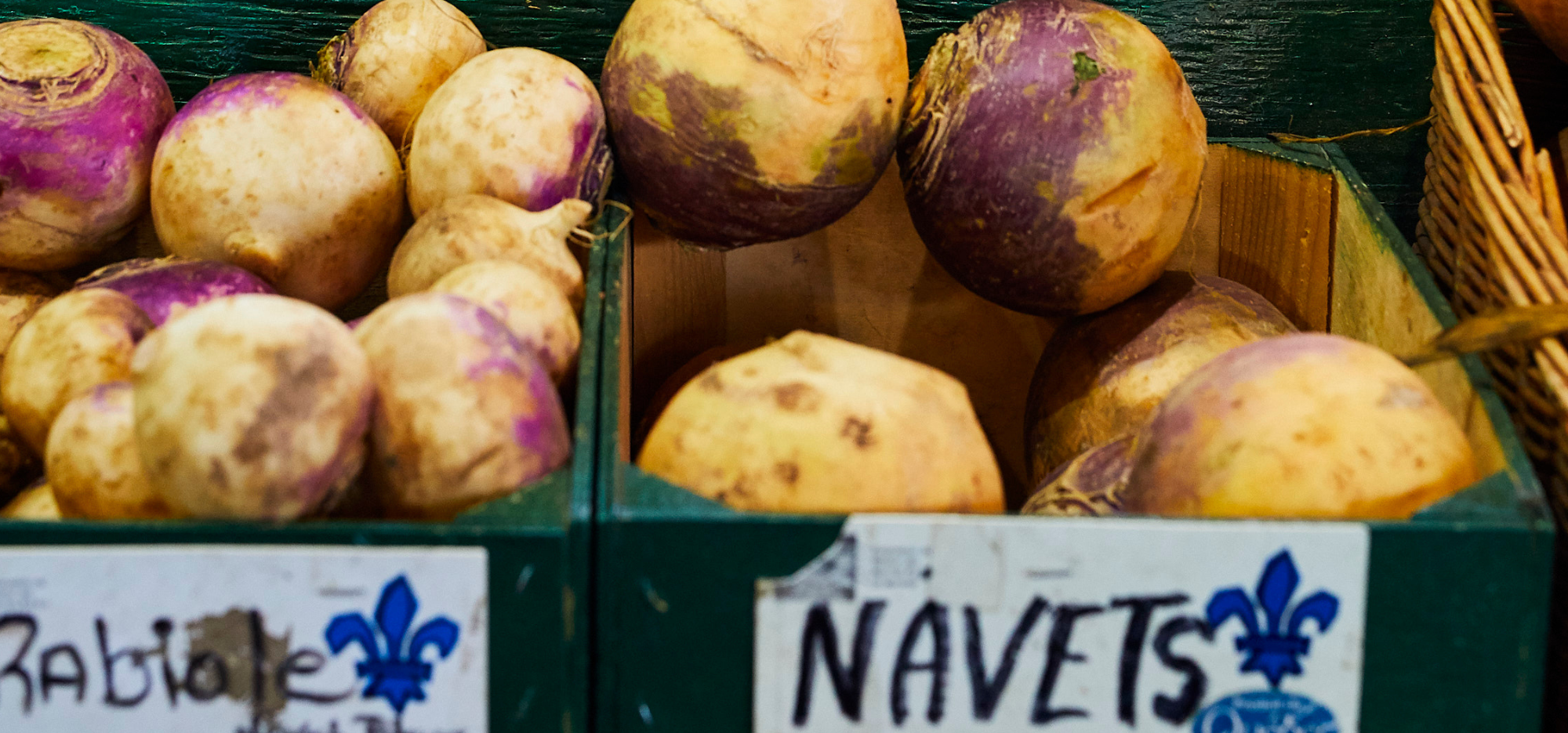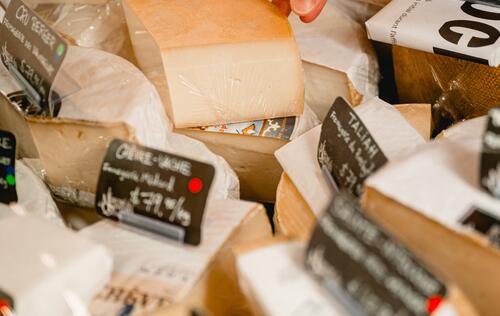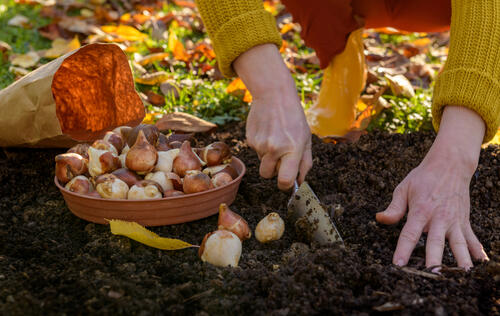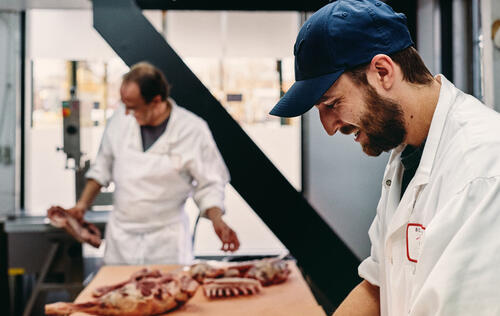Delicious roots at the market

Leek, onion, shallot, garlic, carrot, parsnip, string potato, Japanese artichoke, burdock, celeriac, chervil, parsley root, salsify, scorzonera, Jerusalem artichoke, tuberous chervil, turnips, pink turnips, black turnips, daikon radishes, rutabagas, winter radishes, red beets, yellow beets, chioga beets, kohlrabi, celeriac, potatoes of all kinds, sweet potatoes, horseradish, turmeric, ginger...
You're probably wondering why this text begins with a list. Well, here's why. These vegetables are roots. Roots adapted to Quebec's climate. Roots that contain a host of essential nutrients. Roots that are crunchy, tender, sweet, nutty, bitter, spicy, and flavorful. And above all, roots that can be stored during the winter, allowing Quebecers to eat locally all year round without fear of getting sick of potatoes and cabbage.
This diversity of root vegetables may come as a surprise. Who has ever bought salsify or Chinese artichokes at the supermarket? Probably no one. But Quebec market gardeners, driven by a love and environmental ethic attributed to vegetable biodiversity, are increasingly turning to the cultivation of these wonderful foods.
If, as the cold season approaches, you are lucky enough to find even half of these varieties at the market, stock up quickly. With a little experience and experimentation, you'll see that these colorful roots (along with their cousins, cabbages, and friends, squashes) can fill your winter with diverse and delicious gourmet dishes.
Honey-glazed carrots, rutabaga papardelle, beet carpaccio, raw Jerusalem artichoke salad, lacto-fermented kohlrabi nigiri, sweet potato and turmeric curry, celeriac and chervil rémoulade, leek soup au gratin, parsnip-stuffed ravioli, three-radish gratin—the possibilities are endless.
A chef's tip? For a successful dish, vary the textures and flavors. Crunchy and creamy; bitter, sweet, salty, and sour. With root vegetables, anything is possible, since most of them can be cooked or eaten raw (except perhaps potatoes) and love to be deglazed with wine, glazed with maple syrup, or accompanied by a vinaigrette. Yes to boiled or mashed roots from time to time (they're so comforting), but what roots really want is to be used to their full potential.
And to fully enjoy the happiness brought by roots and tubers, you need to know how to store them, in addition to learning how to cook them. Ideally, if you are lucky enough, you should store them in a cold room (between 2 and 10°C), away from light. Carrots, parsnips, salsify, and turnips are best stored buried in boxes filled with dry sand. If you only have a refrigerator, the best option is to place the vegetables in perforated plastic bags.
You know, we often hear about the positive impacts of locavorism: the environment, the economy, social ties, preserving market gardening heritage... But ultimately, the best thing that food autonomy can offer us is the joy of savoring our land and our climate. Because yes, eating what grows locally, twelve months a year, is good for you.
A text by Élizabeth Cardin, author of L'Érable et la perdrix (The Maple Tree and the Partridge) and Le temps des récoltes (Harvest Time), as well as a former restaurateur.




